

The Canadian Net-Zero Emissions Accountability Act became law on June 29th, 2021. To meet these targets, all industries are carefully examining their emissions footprint. The Oil-Sands industry is estimated to account for ten percent of greenhouse gas (GHG) emissions in Canada. Recent data suggests that in 2020, around seven megatonnes of methane and carbon dioxide were released from oil sands tailings, a by-product of the oil sands production process. We aim to study this problem from a fluid mechanics perspective by investigating the stability and migration of gas bubbles in the tailings materials.
The tailings ponds consist of the FFT and MFT layers, comprising water, sand, anaerobic microorganisms, and naphtha. Microbial degradation of naphtha in these layers leads to the production of methane and carbon dioxide, contributing to GHG emissions. The tailings materials can be categorized as yield stress fluids. These materials behave like a solid when the applied stresses are below a threshold, i.e., the yield stress, while above the threshold, they deform and flow like a liquid. This characteristic enables the layers to retain gas bubbles. Our interest lies in understanding the entrapment and release of bubbles, exploring the physical processes, and investigating how fluid rheology can potentially be used to control GHG emissions from the ponds.
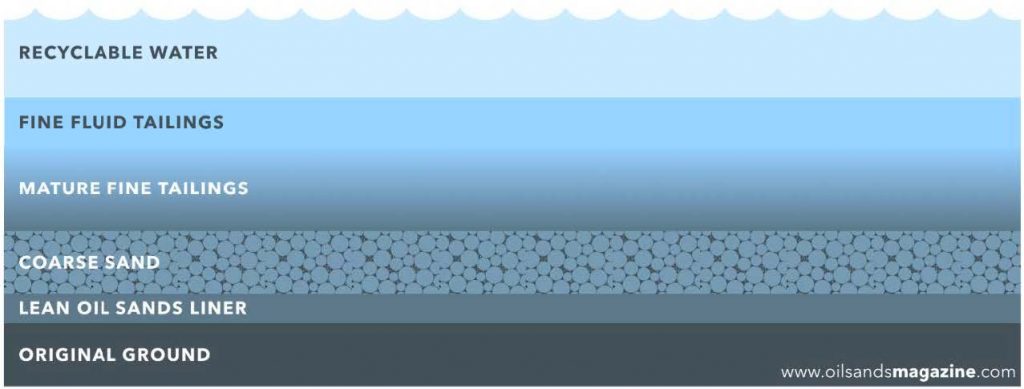
Figure 1: Schematic of the stratified tailings pond structure. Our focus: FFT, MFT & coarse sand layers
We have been studying this process in a lab setting, using lab experiments, models and computations.
1. Growth and stability of bubbles in a yield stress fluid:
Experiments are reported that explore the onset of motion of bubbles in a model yield stress 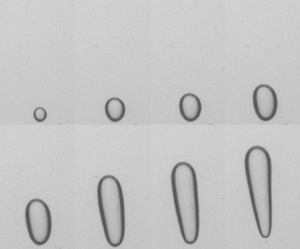 fluid, Carbopol gel. Starting from a trapped spherical bubble in a gel, the yielding limit for the bubble motion is obtained by gradually expanding the bubble via a stepwise decrease in pressure. Our results show that at the yielding limit bubbles are longer and thinner when they are in a higher concentrated gel. This is suggestive of a link between the shape and size of the bubbles at the onset of motion and the rheology of the material, in particular elastic behaviour below the yielding point. Particular attention has been paid to investigating the dynamic response of gel during the bubble growth. Subjecting the bubble to a periodic change in the pressure confirms the irreversibility of the gel deformation and its hysteresis, which are hallmarks of nonlinear viscoelastic behaviour of the gel before yielding. In this context, the periodic expansion and contraction of the bubbles leave residual deformation (stresses) in the gel which facilitates the liberation of bubbles.
fluid, Carbopol gel. Starting from a trapped spherical bubble in a gel, the yielding limit for the bubble motion is obtained by gradually expanding the bubble via a stepwise decrease in pressure. Our results show that at the yielding limit bubbles are longer and thinner when they are in a higher concentrated gel. This is suggestive of a link between the shape and size of the bubbles at the onset of motion and the rheology of the material, in particular elastic behaviour below the yielding point. Particular attention has been paid to investigating the dynamic response of gel during the bubble growth. Subjecting the bubble to a periodic change in the pressure confirms the irreversibility of the gel deformation and its hysteresis, which are hallmarks of nonlinear viscoelastic behaviour of the gel before yielding. In this context, the periodic expansion and contraction of the bubbles leave residual deformation (stresses) in the gel which facilitates the liberation of bubbles.
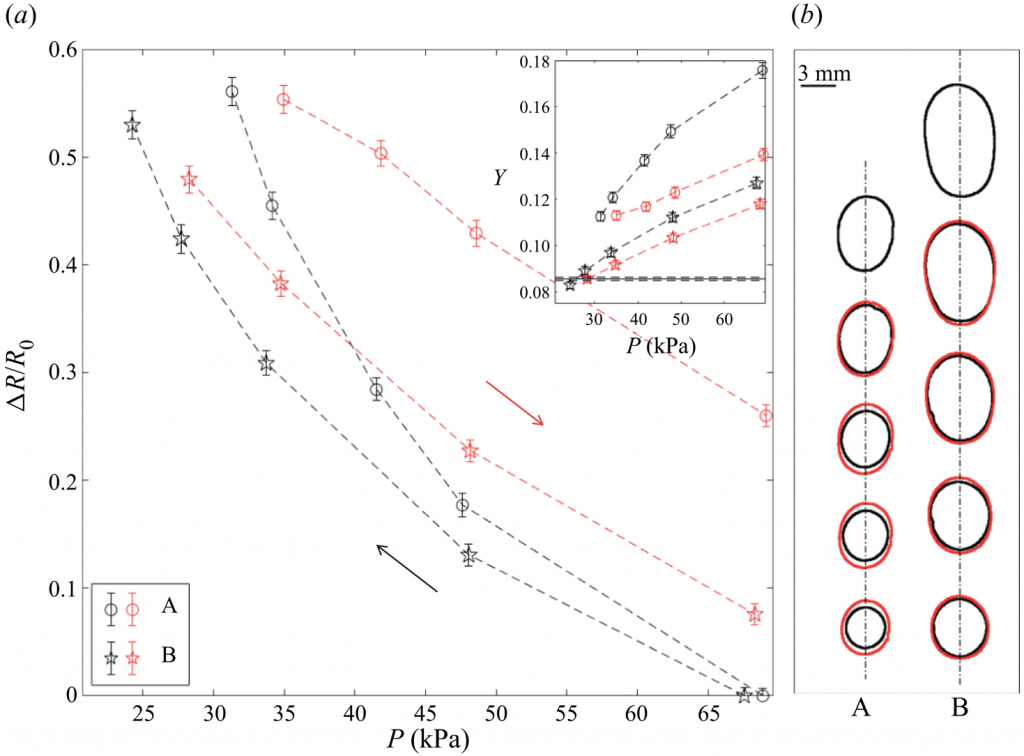
Radius data for two different sets of ramp-up and ramp-down tests (A and B) with different lower bounds for the absolute pressure. In case A the bubble remain trapped in the gel during the test, while in case B the bubble rises slightly at the lowest absolute pressure. Each set of tests includes a pressure ramp-down test (black symbols) followed by a pressure ramp-up test (red symbols). The inset shows the yield number versus absolute pressure, on the top of the column of 0.1%(wtwt−1) Carbopol. The critical yield number and its error bar is shown by the horizontal solid and dashed lines, respectively. (b) The profiles of the bubble during the ramp-down (black) and ramp-up (red) test, for cases A and B.
M. Daneshi, I. A. Frigaard, Growth and stability of bubbles in a yield stress fluid. Journal of Fluid Mechanics. 2023 Feb;957:A16.
2. Stability of multiple bubbles in a yield stress fluid (role of interactions) :
A series of experiments have been performed to investigate the growth and stability of bubble clouds in gels with different concentrations. Our objective is to find a link between the rheology of the gel and the maximum gas concentration that can be trapped in the gel and the shape and size of the bubbles at the onset of motion. Our results show increasing the gel concentration, i.e. the yield stress of the gel, improves the capacity for gas retention. In addition, our study confirms that bubble clouds become unstable at a smaller bubble size in comparison with that of a single bubble. This is likely related to the interaction of the stress
fields developing around the bubbles or their coalescence. To further investigate this point, we extend our study by looking at more fundamental scenarios, i.e. two or three bubbles at different orientations and separation distances. We examine this problem using both an experimental and a numerical approach to demonstrate how the stress fields around neighbouring bubbles interfere with each other and how this affects their onset of motion in a yield stress fluid.
3. Effects of non-uniform rheology on the motion of bubbles in a yield-stress fluid:

Flow around a bubble rising in a layer of a Newtonian fluid, with thickness of L = 1, surrounded by a Bingham fluid. The contour represent log of second invariant of shear rate.
Experimentally, when bubbles rise through yield-stress fluids they create a pathway that is preferentially followed by subsequent bubbles. The formation of such paths is not fully understood rheologically. Here, we instead study the effect of pathways, modelled as a pathway within which the yield stress is destroyed. We study how bubbles rise along such ‘damaged’ channels and how they may be trapped by a combination of capillary effects and the yield stress of the surrounding fluid. We then study the effects of these channels on distant bubbles. We show that the damaged channels attract bubbles that are mobile but lie at a distance well beyond the yielded envelope of the bubble. Angled channels also attract bubbles, that may either move along the channel or migrate outside. Experiments illustrate these behaviours, which are quantified in a series of two-dimensional computations. The study is motivated by interest in bubble release mechanisms in mined tailing ponds.

Flow around a rising bubble initially positioned in the yield stress fluid at a centre-to-centre
distance of, Λ = 5, to a Newtonian layer. The results were obtained for Ar = 50, Bo = 5, Y = 0.1 at t =
0, 50, 400, 550, 900, from (a) to (d).
M. Zare, M. Daneshi, I.A. Frigaard, Effects of non-uniform rheology on the motion of bubbles in a yield-stress fluid. Journal of Fluid Mechanics. 2021 Jul;919:A25.
4. Effects of thixotropy and shear history dependence of the fluid on the bubble stability and migration :
To better understand the effect of time-dependent behaviour of the material on bubble cloud growth and release in yield stress fluids, we performed experiments with a more complex thixotropic viscoplastic fluid, Laponite. Our observations show that the bubbles will tend to grow more prominently in directions where the material is weaker, which can be due to irregularity, shear history or uneven structural buildup. Aside from the addition of thixotropy/aging, the qualitative picture of irregularity and metastable bubble release prevents accumulation. For example, some of our results regarding the growth and migration of a single bubble in Laponite are shown here.
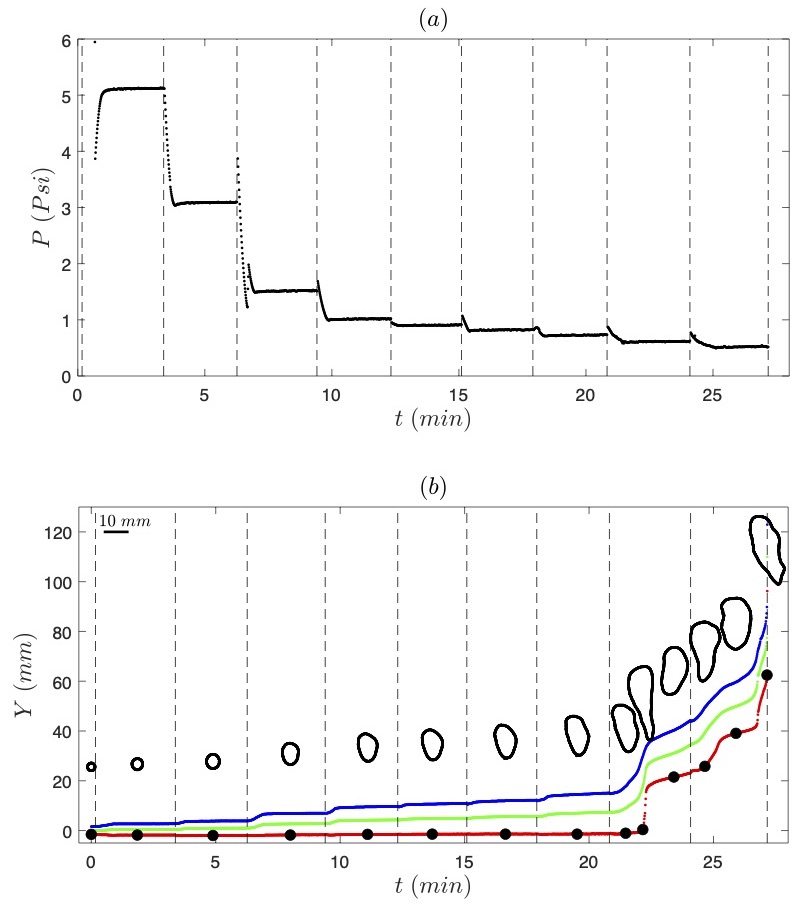
The growth of the bubble and evolution of its shape in Laponite 1$\%$ (with a relatively long rest time), during the pressure ramp-down test. The material was left to rest for 2 hours following a pre-shearing process before conducting the experiment. (a) The absolute air pressure on the surface of the fluid column, adjusted by the vacuum system, versus time. (b) Position of the top (blue), centroid (green) and bottom (red) of the bubble versus time. This panel also includes the bubble profiles at several discrete points marked by black circles. Note that the scale bar corresponds to the bubble profiles.
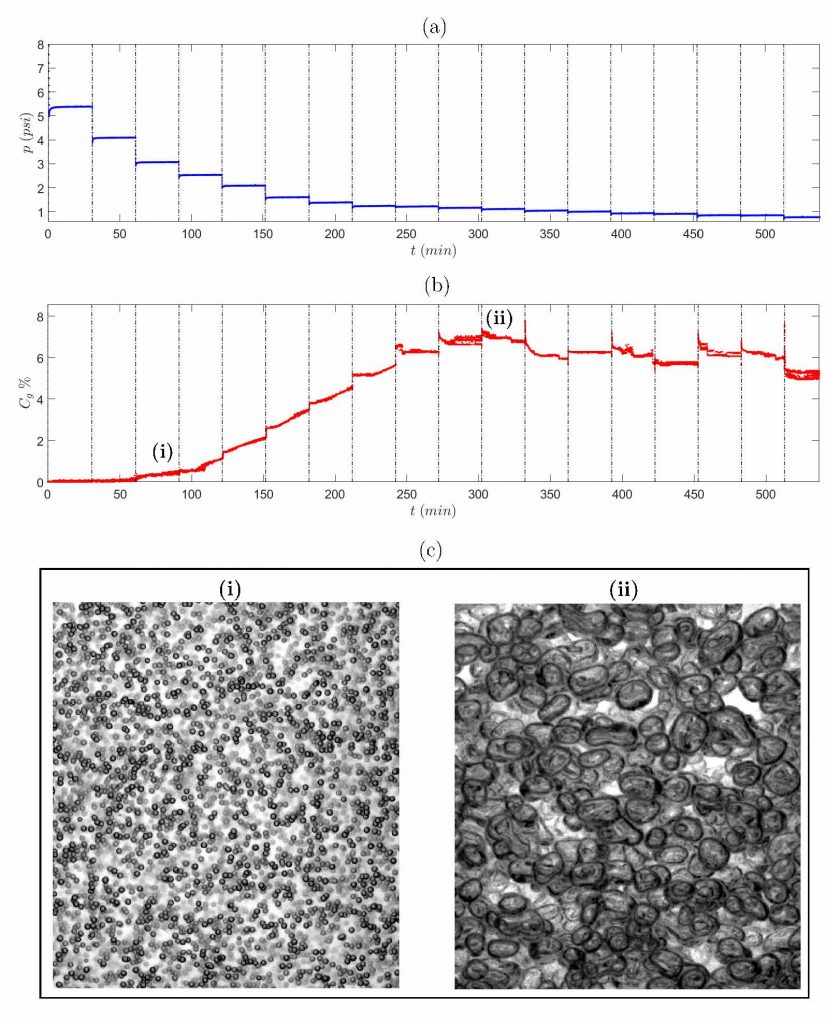
Nucleation and growth of bubbles in Laponite $1\%$ during a step-wise pressure ramp-down test: The variation of pressure at the surface of the fluid column versus time is shown in panel (a). The variation of gas concentration with time is presented in panel (b). Panel (c) displays the evolution of the shape of bubbles. It includes an image of bubbles at an initial pressure step (i) and at the onset of motion (ii). Note that (i) and (ii) are defined in panel (b).
Ongoing Research:
- Modelling bubbles coalescence in a YSF
- Studying the flow structure of a YSF developing around a rising bubble (PIV measurements + EVP computations)
- Effect of damaged layers on the onset of motion of bubbles in a YSF
